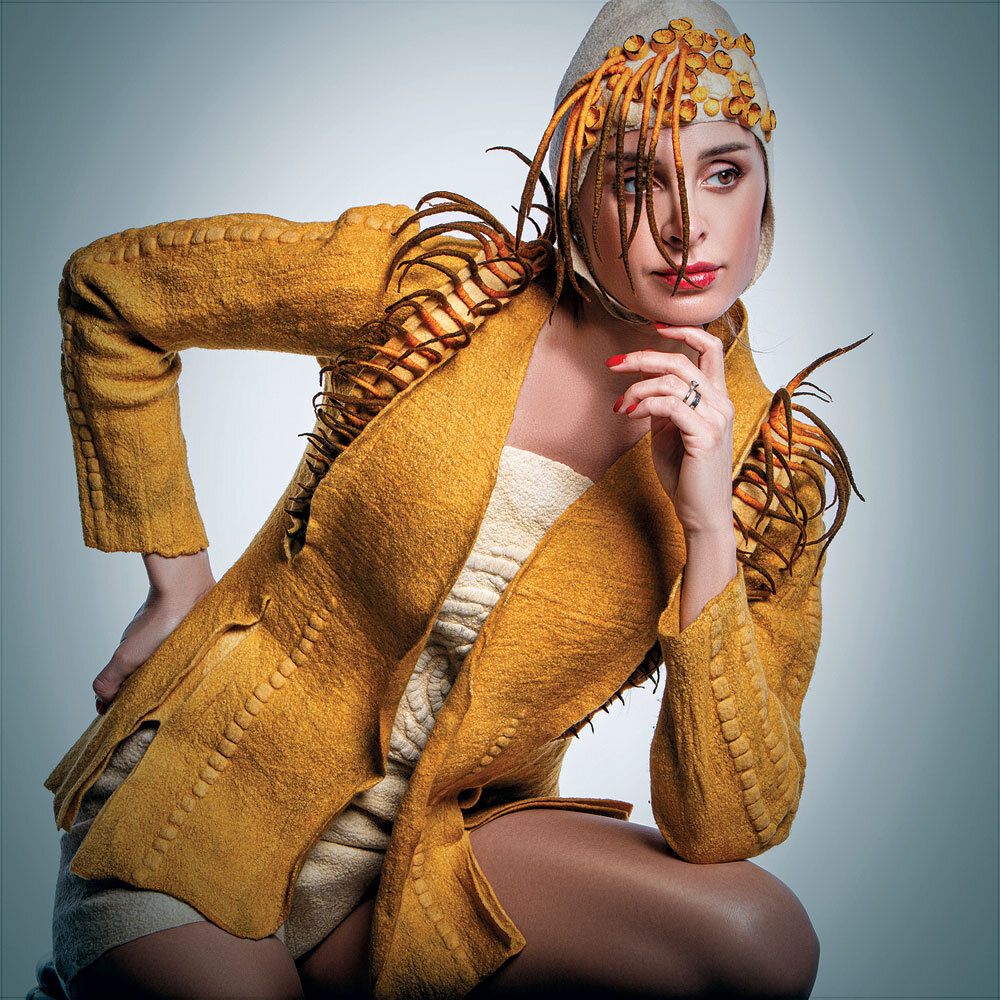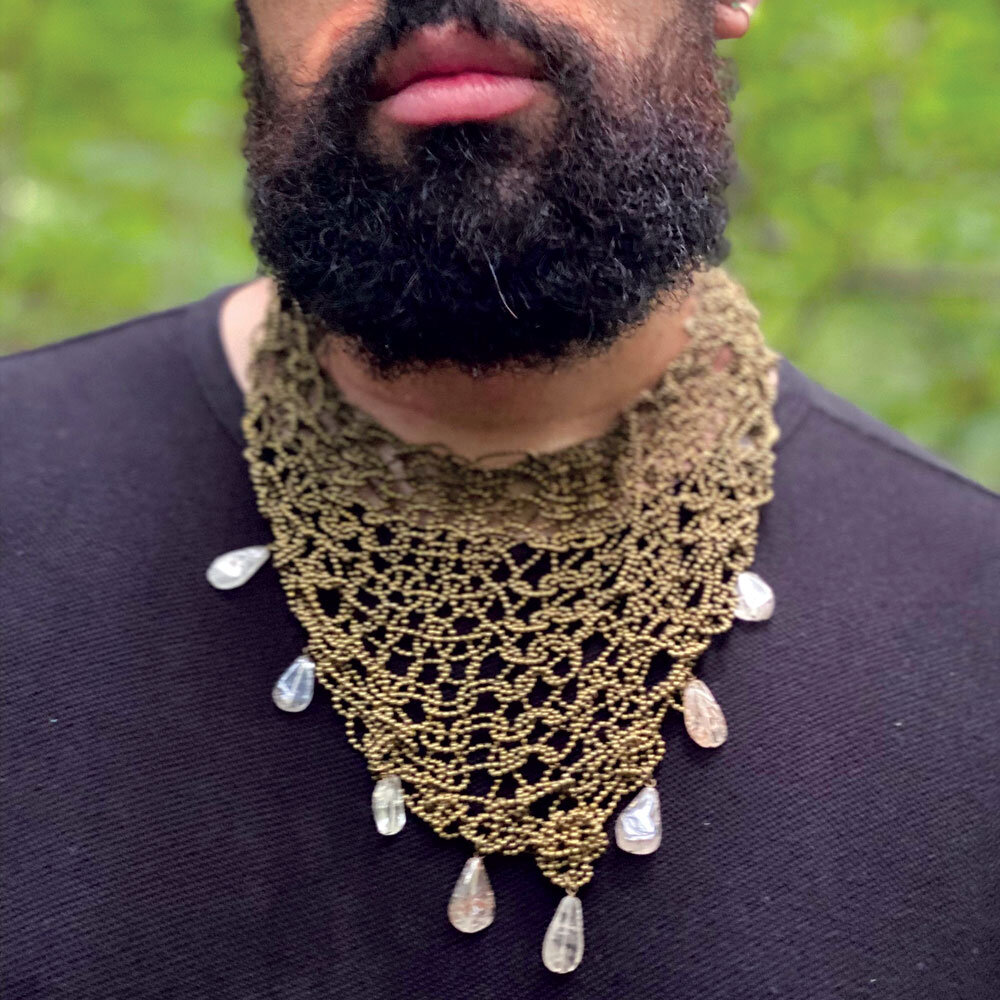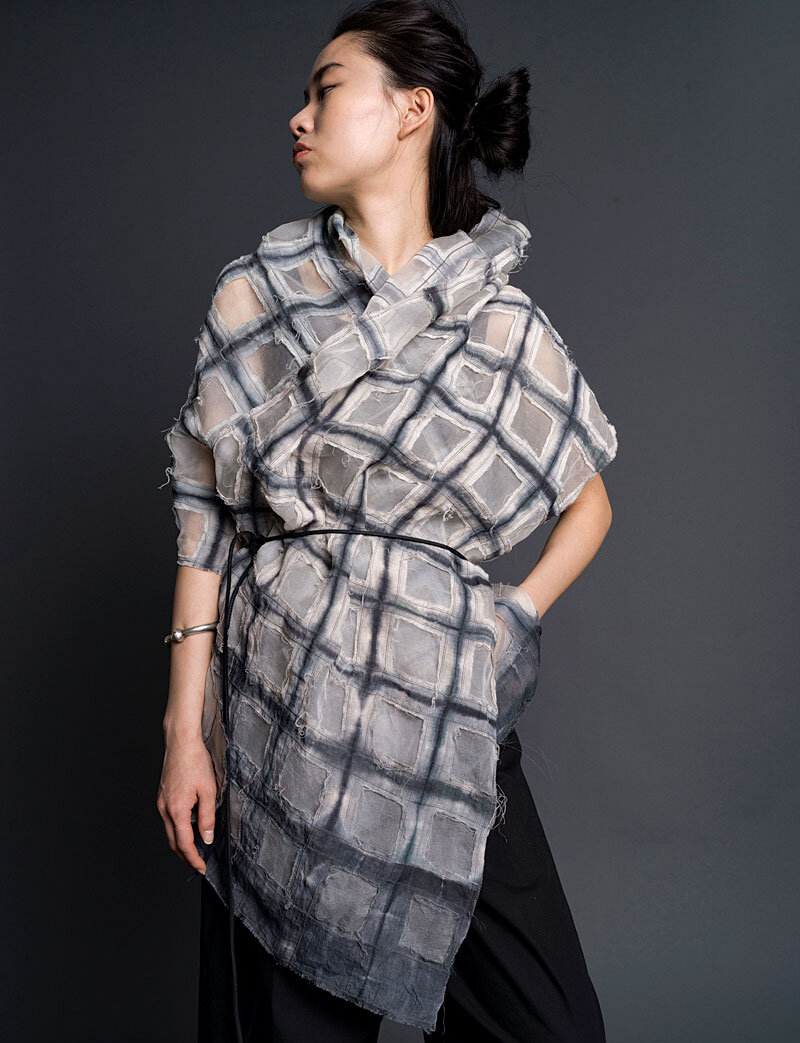Smithsonian Craft Optimism
Smithsonian Craft Optimism is an inaugural digital show and free to the public,
from April 24 – May 1, 2021. Visit their website at craftoptimism.si.edu.
Click for Captions
SARA OWENS, Jewelry.
A strange new world is upon us. Where once we strolled leisurely through double rows of booths, a high vaulted ceiling letting in curtains of light, we now scroll through photographs on a screen, pixels defining handmade objects on a handheld phone.
The necessity of this change is through happenstance and misfortune, part of the sweeping trough of adjustments left in the wake of COVID-19. Yet the ingenuity displayed in adapting to a physically isolated world has brought out the natural determination and flexibility exhibited by artists and those in the craft community. The Smithsonian Women’s Committee, having for nearly forty years worked with craftspeople to host in-person marketplaces, had to shelve its illustrious physical show in 2020 in favor of a digital one.
This spring, they take the lessons of last year to bring forth Craft Optimism, a new digital show that is focusing on the role of artists in creating new dialogues around climate change. Given the polarization we are experiencing as a nation, and indeed, around the world, bringing craft into what some might see as a political issue is not something to be taken lightly. It takes a certain amount of courage to make a declaration, a stand, and Craft Optimism is loudly and robustly doing just that.
It couldn’t be better timed; as we are going through a period of intense transition, where our previous daily routine has been upended, and this strange new COVID-19 reality is raising in all of us questions of where we are and how we go forward, controversy loses its edge.
In truth, there is nothing controversial about tying craft to the environment. At the heart of craft is the hand, the open hand that through toil is implicitly sustainable. Fibers drawn from natural sources, dyes made from plants rather than toxic chemicals, the manual production of a tool rather than the potentially pollutive manufacturing of the factory, craft has through its many thousand-year-old history been earthed in living harmoniously with nature, rather than its exploitation.
That message is perhaps at its most powerful when unspoken, and each of the artists exhibiting at Craft Optimism communicates it in their own way. Sara Owens is one such artist. A jewelrymaker who apprenticed under famous (some might say infamous) Pacific Northwest jeweler Nancy Worden, Owens has used all sorts of organic and recycled materials that would make most people do a double-take. Used coffee filters? Rubber bulbs? Pig femurs? How does this cornucopia of refuse become beautiful jewelry?
A strong sense of design and an understanding that there is something beguiling in decay and corrosion, for starters. Oxidized silver, after all, is marvelous in its crisp, metallic black; somehow the more desirable for its deviation from the luminescent shining surface we normally attribute to it. Her use of naturally stained coffee filters acknowledges the thrill we get from the color of rust and the earth, like the tea or coffee stained treasure maps we made in first-grade to imitate age.
FRITTELLI & LOCKWOOD, Wearables.
Owens has been immersed in finding a balanced relationship with the planet since the beginning. She and her husband built a 900 square-foot strawbale home, aided by friends, and constructed a jewelry studio in their proverbial backyard on Whidbey Island. This self-sufficiency has translated into a very different quest during the pandemic, as she became pregnant with their baby girl, now born of this year. The necessity of staying home meant exploring the digital space that is the platform for this year’s show.
“As the virus began its rampage in Washington State, galleries and stores closed,” Owens recalls. This led to her creation of an online shop, an endeavor that required much more work than she had imagined. Photographing work, both on and off the body, writing new sales copy, learning about search engine optimization, and crafting her online presentation kept her constantly occupied, but it paid off. “I wasn’t expecting a new online shop to do well while unemployment was reaching record highs and I wondered if anyone would buy jewelry in such hard times, but people did,” she muses. “In fact because everyone was staying at home, people had more time to cruise the internet and shop online.”
Many of the textile artists at Craft Optimism have been pursuing sustainable practices since their inception. In an amusing twist of events, the interconnectedness created by the internet and globalism has offered many clothing makers the opportunity to obtain ethically made fibers straight from the source. Such is the case with weavers Cecilia Frittelli and Richard Lockwood. In the past few years they have begun partnering with Scottish sheep farmers at Island at the Edge, who rear rare sheep such as the Hebridean (who have highly intimidating horns!). From these raw materials to their looms, each step in their creative process is hands-on and not only sustainable, but remarkable as bright, intensely patterned cloth spools out in richly textured swathes, to be then cut and sewn into jackets, coats and scarves. These clothes are chic and dignified, something a young British gentleman might wear, or a hip Scottish lass who wants to revel in a bit of plaid; yet, they are also conscientious and mindful.
Not all artists arrive at environmental consciousness in the same way. Holly Anne Mitchell is a pioneer in using recycled materials for jewelry; in her case, newspaper! Using intricate folding and rolling techniques, she turns Sunday comic pages and headlines into a mosaic of colors and patterns. Bits of text peek out, forming short legible phrases that beguile and intrigue the eye. Yet, while the medium she chose back in 1990 is an explicit example of reuse, Mitchell’s reason for choosing it was simple attraction. “While studying Metalsmithing in college, my professor gave students an assignment to create jewelry using a non-traditional material,” Mitchell remembers. “She really wanted us to think outside of the box and really challenge ourselves.” As is so often the case, vivid childhood memories formed the roots of aesthetic appreciation. Her mother subscribed to several newspapers in the Chicago area, including the Chicago Tribune, and those Sunday editions with their mesmerizing comic strips resonated with her. In that moment, she made the decision to use newspapers for her college project, and the rest is history.
HOLLY ANNE MITCHELL, Jewelry.
In Mitchell’s case, the medium began to exert its influence on her. For the first fourteen years of working with newspaper, her main concern was the stylistic attributes of the material, from the linearity of bar codes to the peculiar patterning of stock listings. It wasn’t until 2004 that the contents became relevant to her work, when she made a reversible necklace about the George W. Bush and John Kerry election. Similarly, working with a recycled material has led to a deeper consciousness of our ecology. “I find myself paying much closer attention to the environmental impact of the other materials/supplies I use in my artwork,” Mitchell explains. “For example, I make sure the adhesives I use are non-toxic. I use egg cartons as display props. I use Noosa Yogurt plastic lids to hold beads during the stitching process. I could go on and on. I really try to repurpose materials rather than discarding them.”
This coevolution of artist and material is not unusual. Carol Lee Shanks was invited to Craft Optimism after her friend and colleague, Heidi Paul of m a d e Contemporary Craft Gallery, recommended her to the Smithsonian Women’s Committee. Shanks has begun partnering with an organization called Fibershed, based in Northern California, whose mission is to connect small farm fiber production with regional manufacturers and individual makers. As Shank says, this effort is to connect “the dots between farmers, ranchers, textile producers, artisans and fashion.”
Ornament last wrote about Carol Lee Shanks in 2012 (Volume 35, No. 4), when she had just begun to utilize cloth scraps from other clothing she had made to produce new garments. The initial intent was not a clearcut desire to be environmentally friendly, but rather a more subtle, complicated attraction to the idea of taking that which would otherwise be discarded, and seeing what could be made from these “remains”. Over time, this artistic experiment took Shanks to new places. 2017 was the first year that she became involved with Fibershed, which prompted a shifting in consciousness in how she regarded the impact her work had on the planet. As is so often the case, the personal intertwined with the political.
“In 2017 Fibershed developed the Community Supported Cloth program in our region. I supported the project by purchasing ten yards of cloth up front to help fund the effort,” Shanks remarks. “Once the cloth was transformed, from sheep to fabric, I created two garments that were exhibited and modeled during a Fibershed Climate Beneficial Gala fundraiser.” What was particularly meaningful to Shanks was that her own family have been farmers. Being a native Californian, this dual connection to both land and familial history fostered a sense of continuing a tradition that lay deep within her.
Click for Captions
Craft Optimism is a generational shift in many respects. It is one of the first shows from a nationally recognized organization that has included several Native American artists. Wayne Nez Gaussoin (Picuris Pueblo/Navajo/French) and Kevin Pourier (Oglala Sioux/Lakota) are instantly recognizable to any attendees of the Heard Indian Fair & Market in Phoenix, Arizona, or the Santa Fe Indian Market in New Mexico, the largest open-air Native American show in the world. Gaussoin and his brother, David, represent a new league of Native artists who seek to push the envelope of traditional work, finding the synthesis between what came before and the contemporary. Pourier is a practitioner of the Lakota art of buffalo horn carving and inlay who is also treading new ground.
Left: WAYNE NEZ GAUSSOIN, Jewelry.
Right: KEVIN POURIER, Jewelry.
For Wayne Nez Gaussoin, sustainability was never the main reason to use a material. “To be very honest, the idea of sustainability was never a conscious decision to try to be ethical,” he responds. “As I have continued my work using alternative materials it was more of a means of resources, availability, and cost and most importantly creativity. Such as the challenge of what can I do with the resources I have on hand. It was not until later when it was being noticed that my work has been labeled ‘sustainable’ as I am becoming more conscious of it now.”
As is the case with so many Native American families, craft and making was a tradition passed down from parent to child. In Gaussoin’s case, his mother gave him free rein to discover and express himself through the art of jewelrymaking. “At an early age, I was taught silversmithing by my mother Connie Tsosie Gaussoin who has over forty-plus years as a professional artist. My mother never pushed me into making ‘Indian looking’ jewelry,” he remembers. “Growing up in the Native art market I have been able to experience and see firsthand what that looks like in all its glory and struggles, especially relating to what is traditional and what is contemporary as western constructs. I often might draw inspiration and techniques from my Picuris and Navajo culture but like every other American who grew up in the early 90s and drinks overpriced coffee, I am also influenced by surroundings that I also incorporate into my work.”
Native Americans connect to the eternal thread between the Earth’s bounty and humanity’s interaction with it, having long practiced a harmonious coexistence. Gaussoin with ample humility explains that he is not a spokesperson for all Native peoples, yet he grasps the issue of environmental degradation as being universal to all of us. “People need to realize that it is a human problem, and that it boils down to the respect of nature and how we live off this earth and what it provides to us as humans,” he says. “We all share the land, we all breathe the same air, we all drink the same water, as Americans and we need to think about it collectively for our future.” This pragmatic understanding underpins the truth about climate change and environmentalism; that the world can be depleted, it is not infinite, and only through careful management can we continue to coexist.
Left: GUSTAV REYES, Jewelry.
Right: HANNAH REGIER, Wearables.
Patrick R. Benesh-Liu is now Coeditor of Ornament and grew up in the office on La Cienaga Street in Los Angeles. A mixed use property with the Benesh-Liu family house in front and a two story office building separated by a small lawn served as the young boy’s proverbial daycare. An old spiral staircase separated his mother’s groundfloor office from the upper level, where the rest of the staff worked. He would return again to work for the magazine during high school and shortly after returning home from college. Benesh-Liu accompanied Carolyn on many of her craft show voyages, and through the time spent with his parents has developed a deep understanding of contemporary craft. This issue he writes on a completely novel phenomenon; the digital craft show, specifically, the Craft Optimism show being debuted by the Smithsonian Women’s Committee. This new show celebrates artists whose work seeks to be environmentally sustainable, drawing attention to the threat of climate change and humanity’s efforts to change our world for the better.













